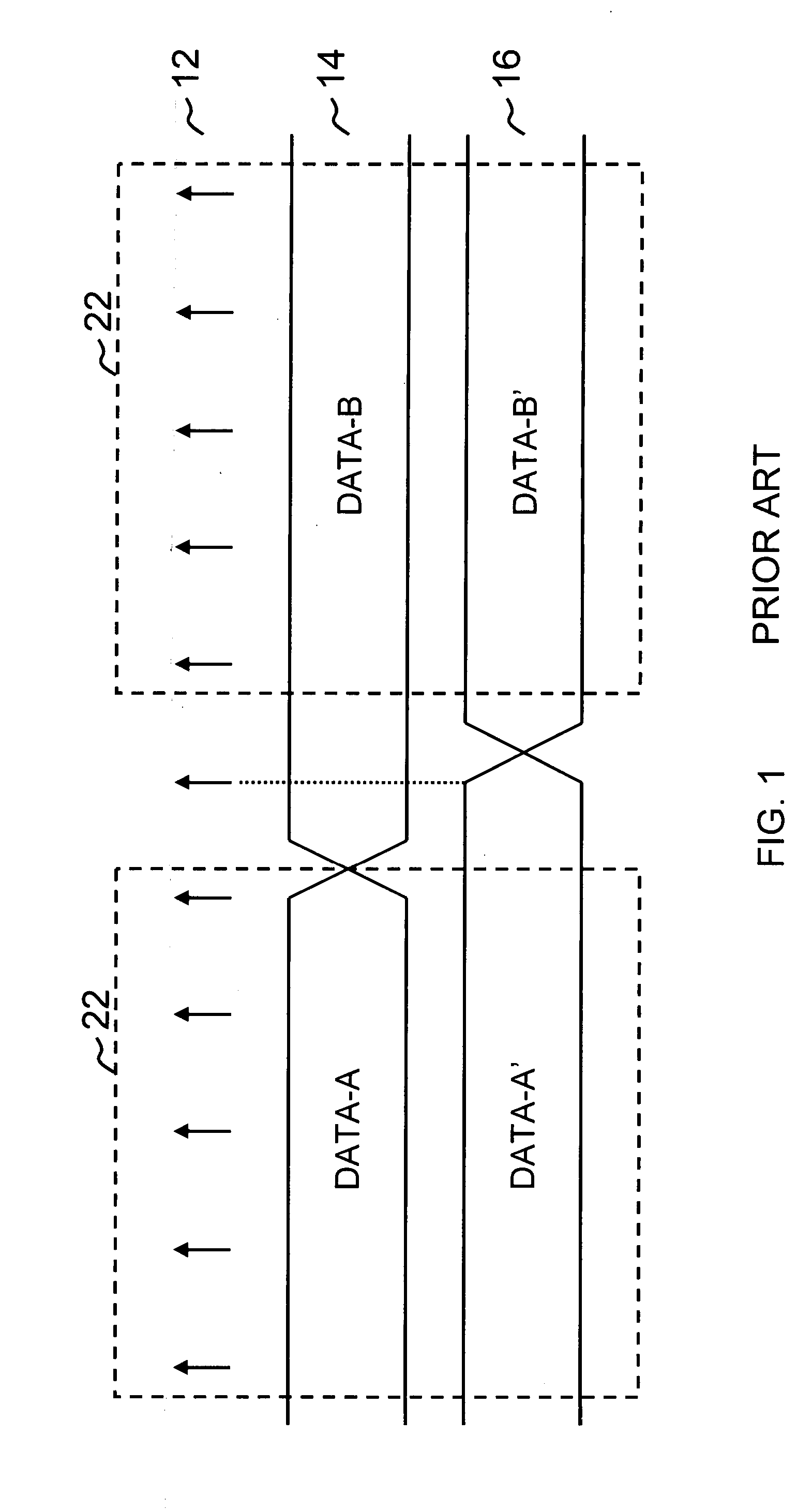Apparatus for handling register-transfer-level description, method thereof, and program storage medium storing program thereof
- Summary
- Abstract
- Description
- Claims
- Application Information
AI Technical Summary
Benefits of technology
Problems solved by technology
Method used
Image
Examples
first embodiment
[0058] The block diagram shown in FIG. 5 also shows a configuration of a simulation apparatus according to a first embodiment of the present invention. Since the functions of the circuit separator 1, the sequential-circuit modifier 2, the simulation describer 3, and the simulation executor 4 have already been described above, the descriptions thereof will be omitted below and more specific operations thereof will be described below.
[0059] The simulation apparatus becomes usable, for example, by installing a simulation program on a computer, decompressing and loading the simulation program on a main memory, and causing the CPU (central processing unit) of the computer to execute the simulation program. The computer configured as the simulation apparatus includes, for example, the CPU; a main memory, such as a DRAM (dynamic random access memory); a storage device, such as an HD (hard disk); input devices, such as a keyboard and mouse; and an output device, such as a display.
[0060] I...
second embodiment
[Sequential-Circuit Detector]
[0103] In the first embodiment described above, it is required that the user insert a predetermined character string into a sequential-circuit-description block in an RTL description 1a in advance.
[0104] In the configuration description below, the simulation apparatus itself determines whether a circuit description of interest is a sequential-circuit description or a combinational-circuit description in accordance with the contents of the description, and performs sequential-circuit modification on the sequential-circuit description.
[0105] A sequential-circuit description inevitably includes conditional branching on a reset event and a clock event. Thus, on the basis of the conditional branching, a sequential-circuit description can be distinguished from a combinational-circuit description.
[0106]FIG. 14 is a flowchart of the sequential-circuit detector according to a second embodiment of the present invention. This processing performed by the sequent...
third embodiment
[Leaving Reset-Event Processing]
[0117] In order to reduce the execution time of a simulation, the first embodiment described above has a configuration for performing processing only when a variable to be subjected to an arithmetic operation changes, without performing arithmetic processing (such as assignment processing) at each clock event in a sequential-circuit description in a block. Further, in the sequential-circuit modification, not only is a clock-event-detection part deleted but also a reset-processing part is deleted. However, a reset-processing part can be left in a sequential-circuit description without being deleted.
[0118] The following description is given on the basis of a configuration in which an area to be processed is identified in advance to execute processing, as in the above-described sequential-circuit detector. The configuration, however, may be such that an RTL description 1a is processed line by line, as in the first embodiment.
[0119] Since the processin...
PUM
 Login to View More
Login to View More Abstract
Description
Claims
Application Information
 Login to View More
Login to View More - R&D
- Intellectual Property
- Life Sciences
- Materials
- Tech Scout
- Unparalleled Data Quality
- Higher Quality Content
- 60% Fewer Hallucinations
Browse by: Latest US Patents, China's latest patents, Technical Efficacy Thesaurus, Application Domain, Technology Topic, Popular Technical Reports.
© 2025 PatSnap. All rights reserved.Legal|Privacy policy|Modern Slavery Act Transparency Statement|Sitemap|About US| Contact US: help@patsnap.com



